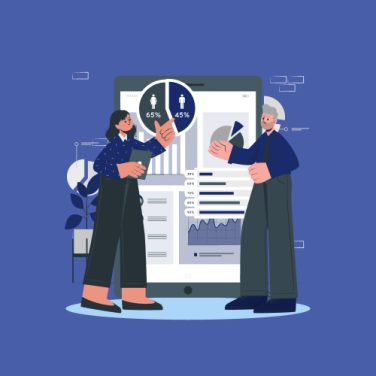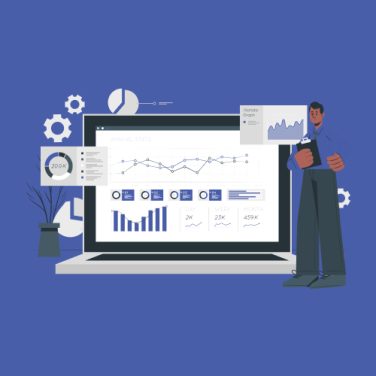Compliance reporting software consolidates regulatory data from financial, operational, labour, and industry-specific sources into standardised reports. It centralises policy tracking, audit logs, and regulatory updates to ensure transparency across an organisation.
Definition and scope
- A digital solution that integrates diverse data sources into compliance dashboards
- Supports financial, regulatory, operational, and labour compliance reporting
Why organisations need compliance reporting software
- Reduces manual effort and minimises risk of fines
- Provides real-time visibility for decision-makers
- Meets growing market demand driven by complex regulations and audits
How compliance reporting software works
Core architecture: The system ingests data from HRIS, payroll, ERP, and other enterprise systems through APIs and connectors. A robust rule engine applies regulatory requirements to raw data, ensuring standardised reporting across all modules.
Data flow and automation
- Automated workflows schedule data collection, report generation, and approval processes
- Dashboards visualise compliance status, exceptions, and KPI trends
- Real-time alerts notify stakeholders of non-compliance or policy changes
- Immutable audit trails support internal and external audits
Key benefits of compliance reporting software
- Risk reduction: Identify compliance gaps early to avoid fines and sanctions
- Efficiency: Automate manual reporting tasks, freeing compliance teams for strategic work
- Accuracy: Standardise rule enforcement to reduce human errors
- Visibility: Real-time dashboards build stakeholder trust and oversight
- Scalability: Handle growing data volumes and evolving regulatory requirements
Must-have features for effective compliance reporting

- Compliance with Local Labour Laws: Automated updates for country-specific regulations
- Graphical HR Dashboards: Customisable views for HR leaders and executives
- HR Analytics for Better Decision Making: Drill-down insights into attendance, payroll, and leaves
- Data-Driven HR Decisions: Predictive analytics forecast compliance risks
- Integration with Payroll & ERP: Seamless data flow eliminates manual imports
AI compliance: Enhancing reporting with AI/ML
NLP for regulatory updates: Natural language processing parses new regulatory texts and updates rule libraries automatically, reducing manual research.
ML-driven risk scoring
- Anomaly detection models flag unusual payroll or HR patterns
- Predictive risk scoring estimates likelihood of compliance breaches
- Automated summaries transform raw data into clear compliance narratives
Deployment Models: Cloud vs On-Premise Compliance Software
| Model | Advantages | Considerations |
|---|---|---|
| Cloud | Rapid deployment Lower upfront cost Automatic updates | Data sovereignty Vendor SLAs |
| On-Premise | Full data control Customisable environment | Higher maintenance Longer deployment |
| Hybrid | Cloud agility with data residency | Integration complexity |
Implementation best practices: From planning to ongoing auditing
- Project planning: Align stakeholders, define scope, set ROI objectives
- System requirements: Infrastructure, security, data governance
- Configuration: Define rules, workflows, role-based access
- Training: Workshops, role-specific guides, AI assistant support
- Go-live: Phased rollout, performance testing, change management
- Continuous audit: Schedule reviews, update rules, refine dashboards
Compliance reporting software for small businesses

- SME challenges: Limited budgets, lean teams, basic IT infrastructure
- Essential features: Automated alerts, easy configuration, built-in templates
- Cost considerations: Free tiers, pay-as-you-grow, bundled modules
- Ease of use: Low-code setup, intuitive interfaces, mobile access
- Example: MiHCM Lite supports up to 250 users with automated labour law updates and dashboards
Pricing models, trials, and onboarding
- Subscription: Per-user/month, tiered features, volume discounts
- Enterprise licensing: Flat fee, unlimited users, premium support
- Freemium & trials: Test core features before commitment
- Billing cycles: Monthly vs annual, upfront vs pay-as-you-go
- Onboarding services: In-house vs vendor-led training packages
Case studies and ROI: Real-world impact
Retail Case Study: A large retail chain cut compliance errors by 70% using AI-driven reporting.
SME Services Firm: A services firm reduced manual report time from five days to two hours with built-in templates.
Global Manufacturing Group: A manufacturer achieved 100% audit readiness across multiple jurisdictions for payroll compliance.
Compliance reporting software selection checklist
- Define compliance scope and regulations covered
- Assess integration needs with existing systems
- Evaluate AI/ML capabilities and update mechanisms
- Compare deployment models and total cost of ownership
- Verify vendor support, training, and audit services
Next steps: Demo, trials, and getting started
- Request a personalised demo tailored to your industry
- Leverage free trials to test core workflows
- Engage vendor onboarding teams for rapid implementation
- Monitor ROI metrics and refine dashboards post-go-live
- Scale from small teams to enterprise-wide reporting seamlessly



